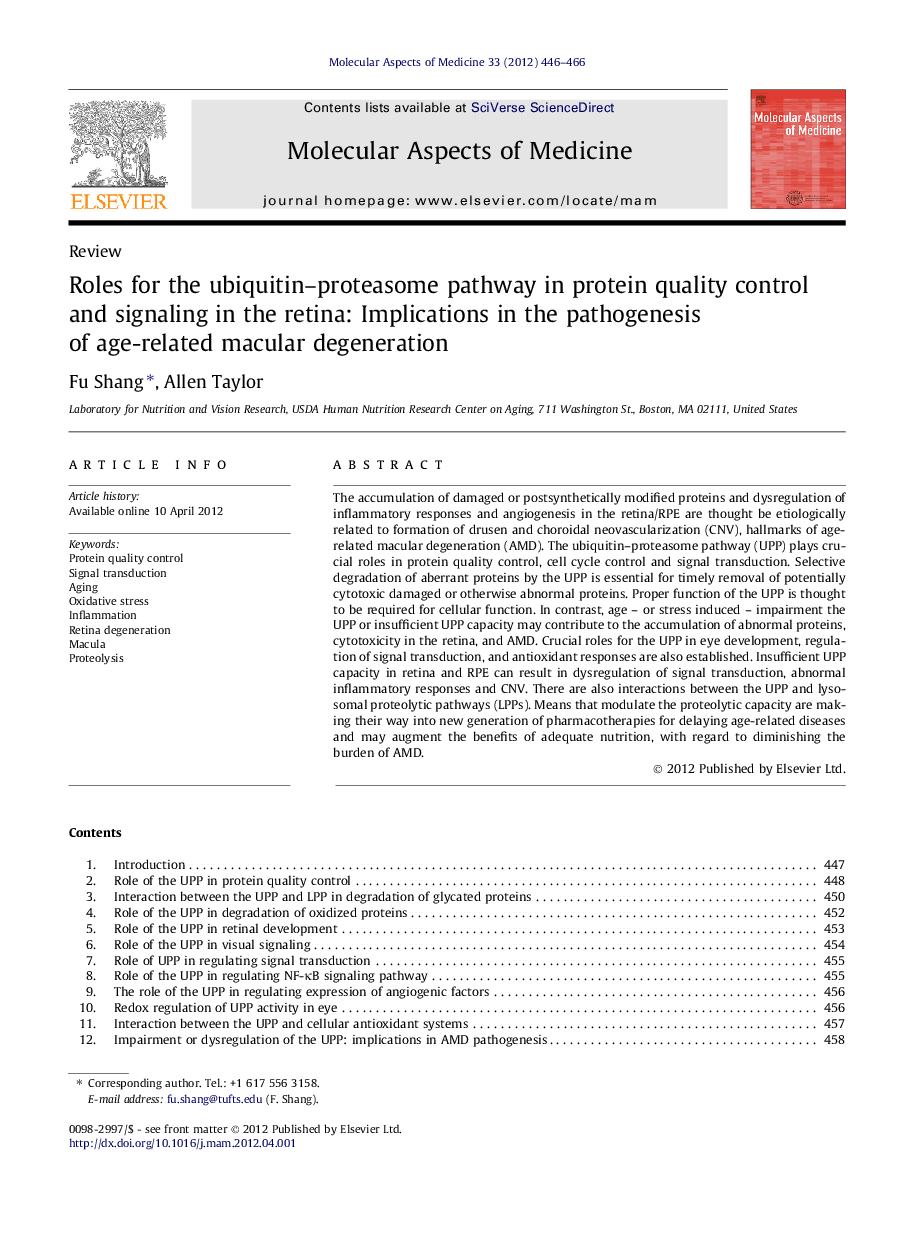| Article ID | Journal | Published Year | Pages | File Type |
|---|---|---|---|---|
| 1995842 | Molecular Aspects of Medicine | 2012 | 21 Pages |
The accumulation of damaged or postsynthetically modified proteins and dysregulation of inflammatory responses and angiogenesis in the retina/RPE are thought be etiologically related to formation of drusen and choroidal neovascularization (CNV), hallmarks of age-related macular degeneration (AMD). The ubiquitin–proteasome pathway (UPP) plays crucial roles in protein quality control, cell cycle control and signal transduction. Selective degradation of aberrant proteins by the UPP is essential for timely removal of potentially cytotoxic damaged or otherwise abnormal proteins. Proper function of the UPP is thought to be required for cellular function. In contrast, age – or stress induced – impairment the UPP or insufficient UPP capacity may contribute to the accumulation of abnormal proteins, cytotoxicity in the retina, and AMD. Crucial roles for the UPP in eye development, regulation of signal transduction, and antioxidant responses are also established. Insufficient UPP capacity in retina and RPE can result in dysregulation of signal transduction, abnormal inflammatory responses and CNV. There are also interactions between the UPP and lysosomal proteolytic pathways (LPPs). Means that modulate the proteolytic capacity are making their way into new generation of pharmacotherapies for delaying age-related diseases and may augment the benefits of adequate nutrition, with regard to diminishing the burden of AMD.
